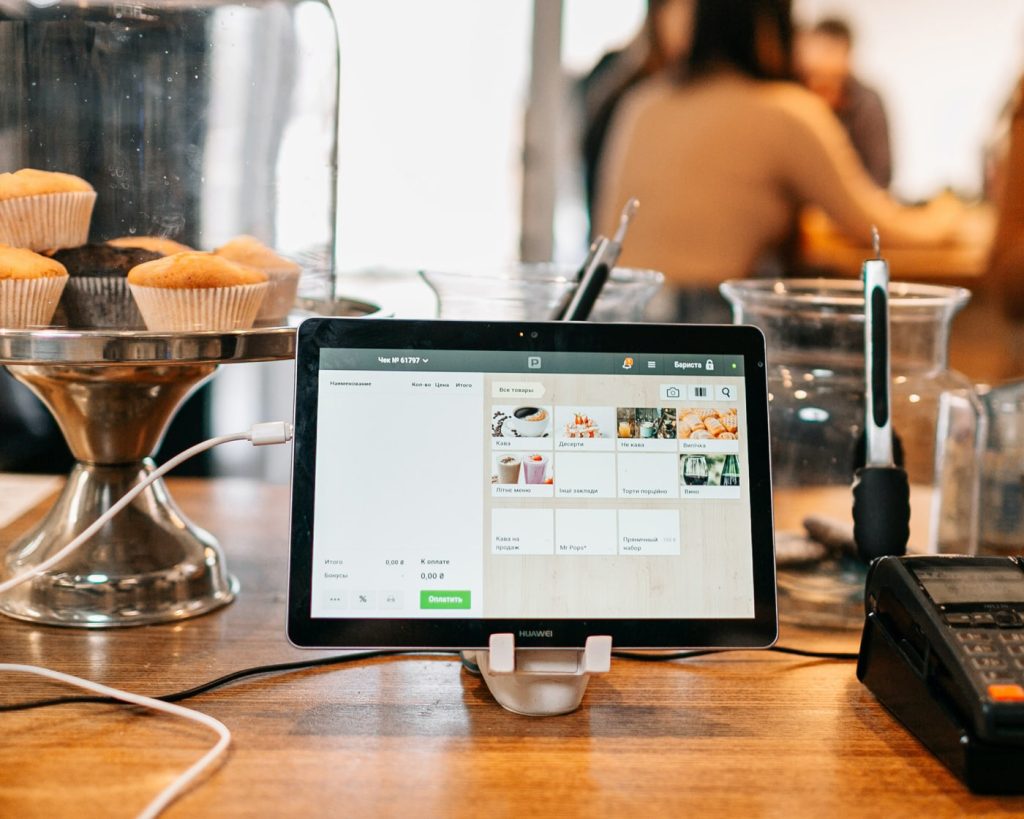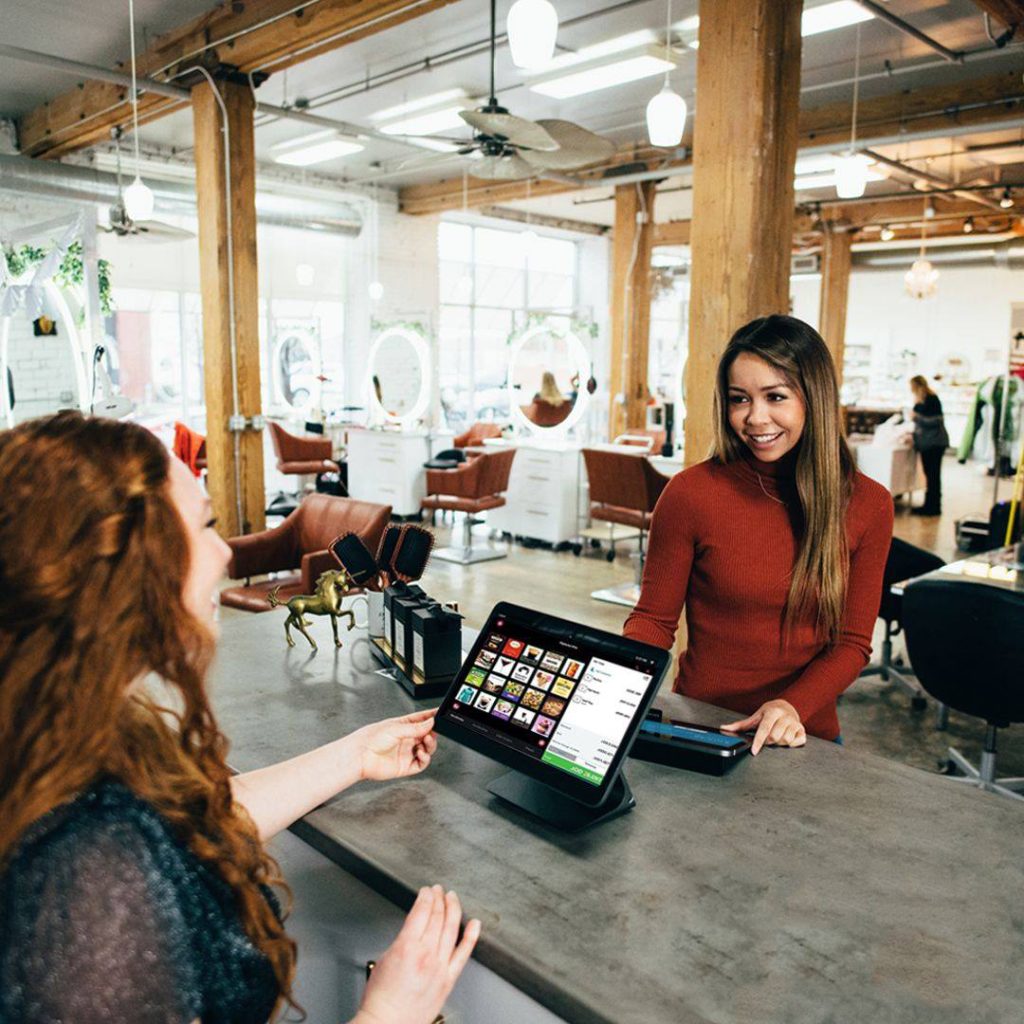1. The best restaurant POS systems are easy to use
Restaurant POS systems are designed to make your staff’s lives easier. However, if your POS system requires 15 manuals and an advanced calculus degree to operate, getting your staff to adapt isn’t going to be easy.
When building a POS solution for the needs of your restaurant, consider the following:
- How quickly orders come in
- The flow of the restaurant floor
- How many items are on the menu
- Average turnover time
You can add about 1,000 other common variables to this list depending on what the workflow is like at your individual restaurant. Each restaurant is unique, and a restaurant POS system needs to reflect that. A highly customizable, simply laid out restaurant POS system is key to keeping business moving at the right pace, while also being accessible to new staff members. The easier your system is to learn and use, the faster your new hires can hit the floor running (and selling).
2. Choose a POS system that focuses on data, data, data
As simple as the POS system interface should be for operators, the backend needs to offer the depth of detail necessary to gain a competitive advantage in a crowded marketplace. Opting for a POS system that garners customer data, inventory information, and countless other metrics will allow you to adjust ordering, staff appropriately for each shift, and determine the right strategy for optimal success on your busiest nights. Considering all of the information the flows through your POS system each day, it’s a complete waste if you have a POS system that doesn’t make the most of that information.
What’s more, your POS system shouldn’t just gather data, but also organize it, and even automate decisions based upon it. From automatic ordering of low-stock items to optimized seating arrangements, your POS effectiveness is only limited by how deep you’re willing to dive into the data.
Marketing is another key area where your restaurant’s POS system, if you make the right choice, should be able to give you a cutting edge. By collecting and sorting data for each customer, you should be able to quickly identify what their preferences are. From there, highly targeted marketing campaigns are easy to launch, as long as you have the data to back them up.
3. Scalability is key
You want to see your business grow. However, once you start scaling operations upwards, will your restaurant POS capabilities scale to match?
In other words, are you going to outgrow your POS system, forcing you to upgrade all over again in just a few months or years? Or did you pick a system that easily scales alongside your restaurant, making adaptations something you don’t even have to think about?
To get the most out of your cloud-based POS system, you want to find one that has the ability to automatically upgrade software, add features and apps, increase data collection, and remain optimized for the lifespan of your equipment.
And when your equipment ages, you need a POS provider that includes hardware upgrades as part of your plan, to ensure you never lose key performance or functionality due to failure.
Features you may not currently need might become paramount once you expand your restaurant’s offerings or open a new location. Your POS needs to accommodate this, as well. Think about this: A couple of years ago, online ordering was something individual restaurants had to carry out themselves. Today there are a variety of apps that do it for you, but they require a POS system that can integrate with theirs. Do you want to be left in the dust or do you want to be able to hop on popular bandwagons when new trends hit?
Scalability is something that is often overlooked by newcomers to POS systems, but is something that is indispensable when productivity and profitability increase.
4. Updates should be a breeze
Unlike their legacy system predecessors, tablet-based POS systems allow for quick and easy updates that you can carry out from the comfort of your own home.
Traditional POS systems require calling out a professional and paying them for their time—and those costs can add up fast, depending on how important it is to you to have an up-to-date POS system (and it should be pretty important). Instead of having to hassle with all of those variables, savvy restaurateurs who opt for iPad-based systems can carry out a system-wide update with nothing more than the tap of an app, which means that you don’t actually have to be in your restaurant to carry out an update. When you’re starting a restaurant, you’ll relish every moment you get to spend at home.
5. Easy integration with other platforms
It’s important that your POS system can easily integrate with other tech platforms, such as payment processing platforms, inventory systems, CRM systems, reservation systems, loyalty programs, and shift scheduling systems. Check out Upserve’s partner marketplace for the integrations offered with Resy, Tock, Singleplatform, and more.
6. Point-of-sale security
Data attacks through restaurant POS systems are common, and old POS systems are notoriously easy to hack. A software-as-a-service (SaaS) solution that stores data in the cloud and is PA-DSS compliant—just like your bank—is much more secure than legacy systems, with exponentially superior support, which is possibly the single most important reason to upgrade. In addition, leveraging EMV technology for credit card transactions takes you off the hook for incorrect charges.
7. Support 24/7, based in the U.S.
If you’re on a legacy POS system and the warranty has expired, good luck finding the provider who sold you the unit, let alone finding a technical person to fix it. Modern POS systems should feature frequent software updates and 24/7, U.S.-based support.
8. Understand your restaurant’s needs
Regardless of what kind of food you serve, you need the right restaurant POS for your operation. Peter Kammerer, the general manager of Providence, Rhode Island-based Sandwich Hut, did a lot of research on leading POS technology for delis before making his decision.
“When I decided I needed a POS for the business, I made a spreadsheet. I did a lot of Googling of touch technology. I knew I wanted like an iPad-based touch technology, lean, mean POS. I did not want to invest in an expensive, clunky POS for my business,” he says. “I looked to see which of those companies had the most features for the most affordable price. And I also talked to people and just said, ‘Hey, what’s going on? Are people really using this stuff? Is it really fast enough?’ One of the exciting things is that because its software can be updated instantly all the time, I’ve watched the app grow and evolve and get better and also respond.”
9. Read reviews for restaurant POS features you need
POS systems can now accommodate numerous types of restaurants and establishments. So, when reading reviews, be sure they account for the type of needs you have within your specific business, and not just which ones get the best overall ratings. If you’re a full-service restaurant, make sure you’re choosing a system that gives you room for growth and expansion, and not discounting a cheaper system that’s designed for food trucks.
10. Consider the processor
“Look for fair rates, but don’t sacrifice service quality,” says Tom DeSimone of Merchant Maverick, an unbiased merchant review site.
A lot of merchants have a hard time assessing the overall value of a processing service. They chase the lowest numbers and often end up with the least valuable service, which in the end, ironically, costs the merchant much more in lost efficiency and extra services purchased elsewhere. Rates are important to consider, and every merchant should carefully review and understand their fees, but they don’t tell the whole story.
Tony Lucca, owner of two successful restaurants including 1905 DC, remembers the first time he had to choose processors. The biggest mistake, he says, is getting scooped up by the first processor that comes along.
You might not know where to look for alternatives, who to ask for advice, or what any of it all means. You may also not understand how significant an impact your processor can have on your bottom line.
At the end of the day, a POS system alone typically won’t provide you with a complete depth of insights. Perhaps you are going to use manager’s log notes, menu analysis and server performance as an indicator of the health of your business.
Source: Checklist For Choosing The Best Restaurant POS System





